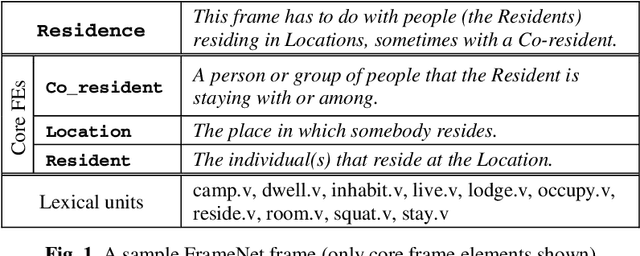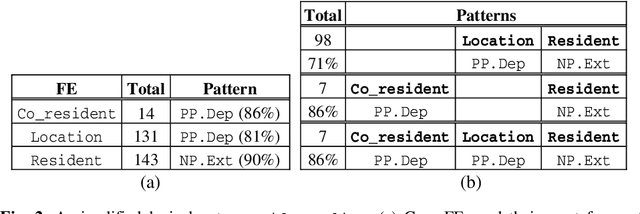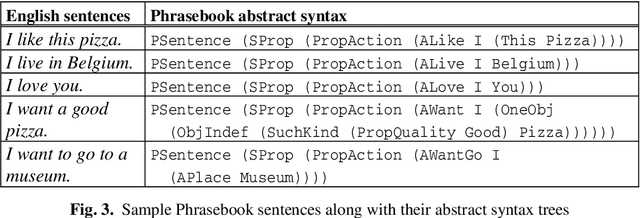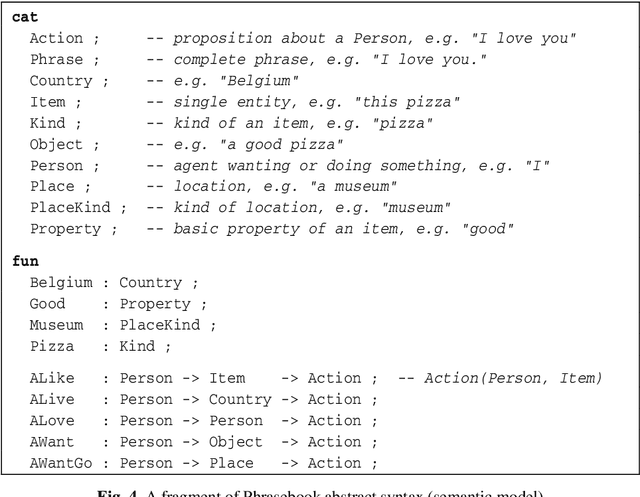FrameNet Resource Grammar Library for GF
Paper and Code
Jun 26, 2014



In this paper we present an ongoing research investigating the possibility and potential of integrating frame semantics, particularly FrameNet, in the Grammatical Framework (GF) application grammar development. An important component of GF is its Resource Grammar Library (RGL) that encapsulates the low-level linguistic knowledge about morphology and syntax of currently more than 20 languages facilitating rapid development of multilingual applications. In the ideal case, porting a GF application grammar to a new language would only require introducing the domain lexicon - translation equivalents that are interlinked via common abstract terms. While it is possible for a highly restricted CNL, developing and porting a less restricted CNL requires above average linguistic knowledge about the particular language, and above average GF experience. Specifying a lexicon is mostly straightforward in the case of nouns (incl. multi-word units), however, verbs are the most complex category (in terms of both inflectional paradigms and argument structure), and adding them to a GF application grammar is not a straightforward task. In this paper we are focusing on verbs, investigating the possibility of creating a multilingual FrameNet-based GF library. We propose an extension to the current RGL, allowing GF application developers to define clauses on the semantic level, thus leaving the language-specific syntactic mapping to this extension. We demonstrate our approach by reengineering the MOLTO Phrasebook application grammar.
 Add to Chrome
Add to Chrome Add to Firefox
Add to Firefox Add to Edge
Add to Edge